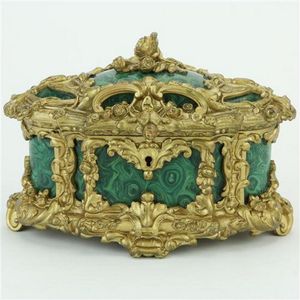French Silver Rocaille Centrepiece by Odiot, Paris
You must be a subscriber, and be logged in to view price and dealer details.
Subscribe Now to view actual auction price for this item
When you subscribe, you have the option of setting the currency in which to display prices to $Au, $US, $NZ or Stg.
- Oak - Native to Europe and England, oak has been used for joinery, furniture and building since the beginning of the medieval civilisation. It is a pale yellow in colour when freshly cut and darkens with age to a mid brown colour.
Oak as a furniture timber was superceded by walnut in the 17th century, and in the 18th century by mahogany,
Semi-fossilised bog oak is black in colour, and is found in peat bogs where the trees have fallen and been preserved from decay by the bog. It is used for jewellery and small carved trinkets.
Pollard oak is taken from an oak that has been regularly pollarded, that is the upper branches have been removed at the top of the trunk, result that new branches would appear, and over time the top would become ball-like. . When harvested and sawn, the timber displays a continuous surface of knotty circles. The timber was scarce and expensive and was used in more expensive pieces of furniture in the Regency and Victorian periods. - Engraving - The method of decorating or creating inscriptions on silver and other metal objects by marking the surface with a sharp instrument such as a diamond point or rotating cutting wheel.
- Circa - A Latin term meaning 'about', often used in the antique trade to give an approximate date for the piece, usually considered to be five years on either side of the circa year. Thus, circa 1900 means the piece was made about 1900, probably between 1895 and 1905. The expression is sometimes abbreviated to c.1900.
This item has been included into following indexes:
Visually similar items

A Victorian fancy silver basket, oval form, the flared sides with fret cut open and engraved leaf scroll, flower and seed head decoration, the applied decorative cast rim with scrolling leaf, shell and bird designs, the conforming base bracket with four sc

A George IV sterling silver Chinoiserie tea caddy by John Wintle, London circa 1825, 17 cm high, 585 grams

A William IV silver comport by John, Henry and Charles Lias, London 1836, with 'C' scroll and floral embossed border the fluted body with leaf moulded centre with radiating foliate and floral tendrils, 685 grams, 27 cm width.

Ormolu jewellery casket with ornate designs framing marble patterned windows & a velvet lined interior, 18 x 13 x 10 cm.
